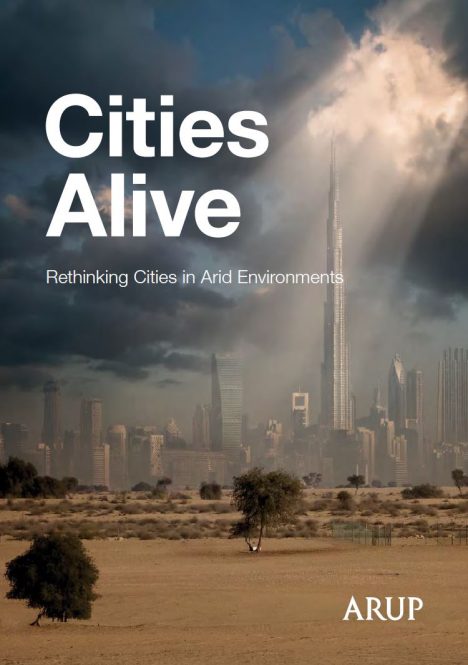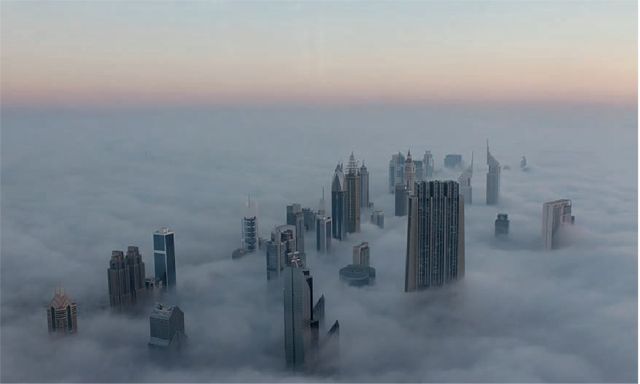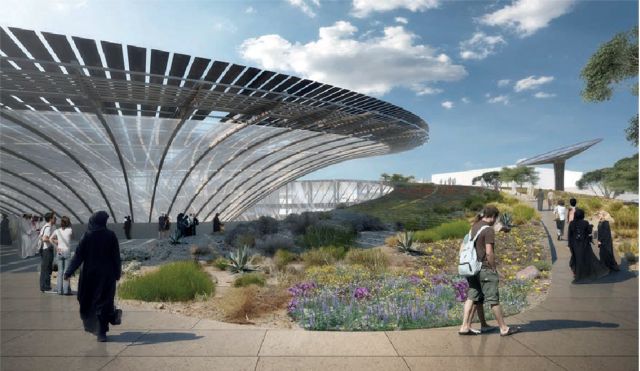Sustainability means a lot of different things to different people
In an increasingly climate-challenged planet, some may say it’s counter intuitive- let alone against sustainability principles- to try and green the world’s arid regions with vegetation:
How can the use of water for green infrastructure, including building integrated greenery, be reconciled against its limited availability? Could the practice even be considered irresponsible? Can and are greenroofs and greenwalls really sustainable in the desert?
Arid Cities Need a Design Paradigm Shift to Remain Viable
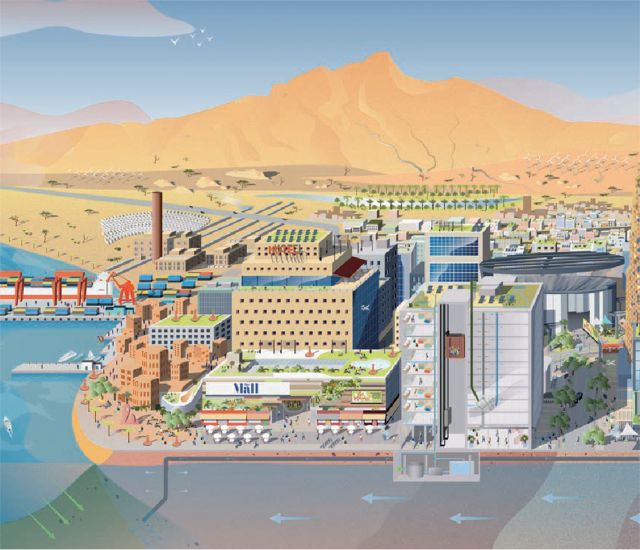
As always, sustainable design principles can be applied in every built environment – we just have to pick and choose the correct ones. All sustainable design should be city and site-specific, with systems and low impact development working in tandem with its local ecology.
“Cities in arid regions are expected to experience the highest rates of natural population growth and urbanisation in the coming century. Yet most are still being planned and designed based on a global city-making paradigm from the 1950s. Cities need to adapt strategies that combine technological innovation with locally adapted and climatically appropriate solutions.
Even simple things such as building orientation and the resulting shade can have a significant impact – allowing people to socialise outdoors, rather than rushing from car to building. Rethinking the way we design public space, can have a significant impact on the wellbeing of citizens.” ~ Arup Associate, Hrvoje Cindric
International Green Roof Congress 2018 Kuwait
During February’s 5th International Green Roof Congress 2018 Kuwait, held for the first time in the Persian Gulf region, we had the pleasure of hearing from Rudi Scheuermann. He’s Arup’s Global Leader of the Building Envelope Design Team, Arup Fellow, and Global Façades leader. Rudi spoke about the new downloadable Arup Report, Cities Alive – Rethinking Cities in Arid Environments.
He gave a great overview of the Report’s research and stressed the importance of teamwork and necessity of a design paradigm shift for city planners and designers working in arid environments.
The International Green Roof Congress 2018 Kuwait was held in the very green municipal Al Shaheed Park, one of the biggest greenroofs in the world. On the evening of the first night, we had a sumptuous dinner atop the venue on a beautiful, clear evening.
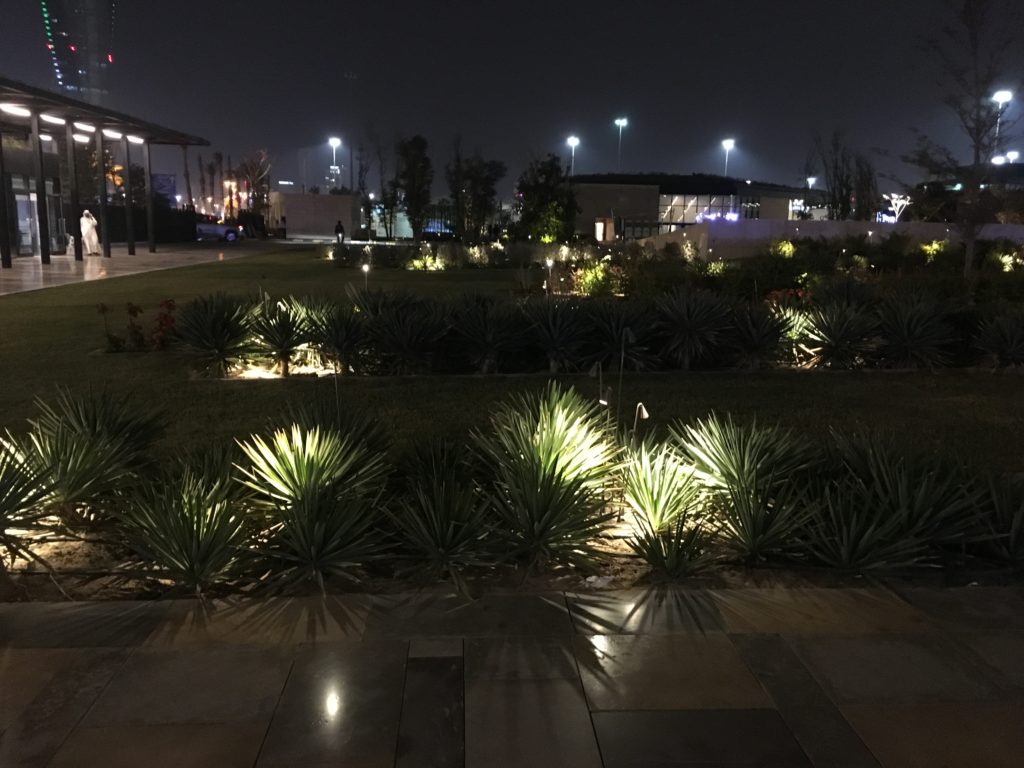
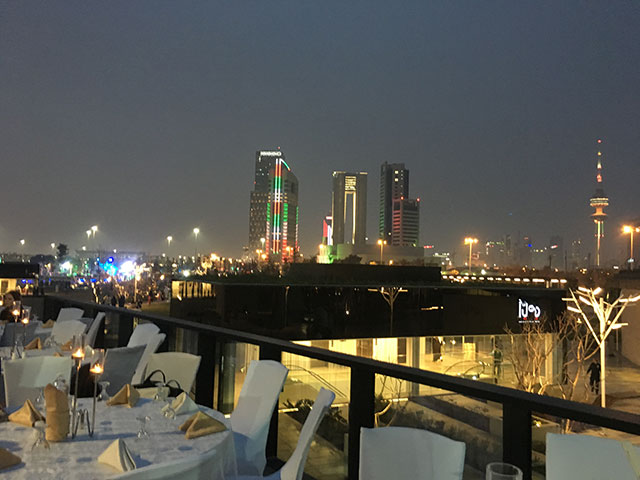
The Trade Show, the excellent lunches, and refreshment breaks were held in a covered breezeway outdoors.
As if on cue, after rain greeted us when we arrived on the second day of the fantastic Kuwait Congress, we experienced a sandstorm! It was a little scary but the couple-hour long event drove home the point that although our surroundings were quite sustainable in design, we were situated within a desert.
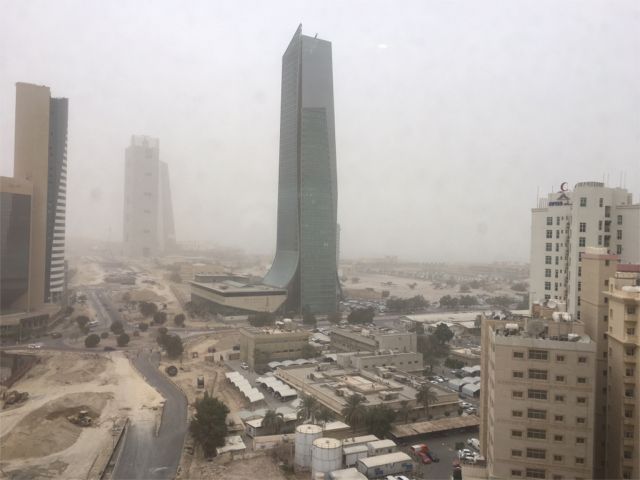
From our hotel we can see the sandstorm approaching on the morning of February 18 as we were leaving for the 2nd day of the IGRC Kuwait 2018 Congress.
Arup Report on Arid Cities: Rethink Planning and Design
Released a couple of weeks ago, the Arup Report outlines three key recommendations to shape the next century of city building in arid regions:
- Learning from the past. Build upon locally adapted climate-specific design solutions.
- Invest in green and blue infrastructure that is designed to work with local environmental and ecological systems.
- Designing intelligent buildings and public spaces that can meet the needs of people in changing climates.
“The report is structured to present best practices for sustainable design in arid environments at the scale of cities, spaces, and buildings. The best practices are presented with illustrated examples showing implementation as well as critical reflections from leading practitioners on the forefront of city making in arid regions around the world.” ~ Cities Alive – Rethinking Cities in Arid
One Third of Our Land Surface is Arid
My own Kuwait Congress presentation was entitled “Top 10 Living Architecture Trends in Dry and Sub-Humid Regions.” Arid and semi-arid lands, grasslands and savannahs, and Mediterranean landscapes encompass 47.39% of the global terrestrial area, and I showed some awesome and sustainably designed, climate appropriate projects.
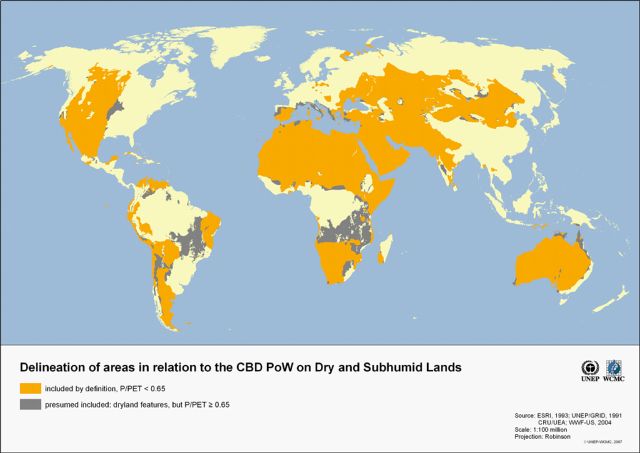
In a world where almost a third of our land surface is classified as arid, the Arup Report is very timely.
The report points to examples of initiatives in arid cities that are making them more sustainable, healthier and better places to live, including:
“Fog and dew harvesting: new technology is allowing harvesting systems and materials to be optimised to extract large amounts of water, even in arid environments with low levels of humidity. The Sustainability Pavilion at the upcoming Dubai Expo 2020 will use hybrid structures that generate renewable solar energy and capture water from humidity in the air to supply a significant proportion of the pavilion’s water requirements.
Cool pavements: small changes to existing designs can make an impact. For example, a rethink of public spaces could improve the quality of lives for citizens. The City of Los Angeles has begun coating its streets with a special paint, CoolSeal, to reduce the temperature of the city. In an initial test it has been shown to reduce ambient temperatures by 6.6 degrees Celsius.
Energy efficient buildings: buildings can be designed to play an active role in reducing reliance on air conditioning and mitigating the Urban Heat Island effect. The Al Bahar Towers in Abu Dhabi have a unique dynamic shading system – a modular ‘Mashrabiya’ that opens and closes to provide self-shading as the sun moves around the building. The system is predicted to reduce the solar energy entering the building by 20% – reducing the amount of air conditioning and energy consumption of the building. Work is also underway to develop buildings that have a cooling effect on their surroundings.
Green roofs and walls: these are not just beautiful but provide cities with greater resilience. A Xeriscape approach, using plant species selected to maximise effective shade and shelter, reducing noise, glare, dust and air pollution, can deliver highly functional areas with a microclimate suitable for people to enjoy throughout the year. Green roof designs in arid climates should aim for a larger percentage of hard surfaces and fewer green elements, reducing the need for irrigation water. The Brewbooks Cactus Garden Roof in Los Angeles is a good example of this.
Open air living: Attractive and comfortable public spaces are vital to the success of cities, significantly impacting their social and economic success. In arid regions the number of public spaces has shrunk dramatically in recent decades. Reversing this trend, the Downtown Project in Las Vegas has aimed to redevelop the city’s old centre, to promote the benefits of a more walkable neighbourhood. The project has made substantial investments in street art and installations to make walking more interesting and comfortable to encourage people to think beyond the car.” ~ Cities Alive – Rethinking Cities in Arid Environments
Well-researched with numerous case studies, we find project examples from around the world including the Middle East, Chile, Australia, and the U.S. In addition to being very interesting, Cities Alive – Rethinking Cities in Arid Environments is well worth your time to review and see what many locales are doing for their own environments.
Enjoy, and we look forward to your comments!
By Linda S. Velazquez, ASLA, LEED AP, GRP
Greenroofs.com Publisher & Greenroofs & Walls of the World™ Virtual Summits Host
 Greenroofs.comConnecting the Planet + Living Architecture
Greenroofs.comConnecting the Planet + Living Architecture
